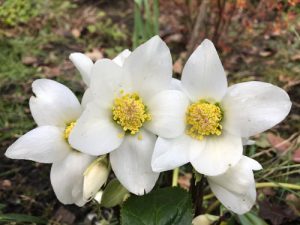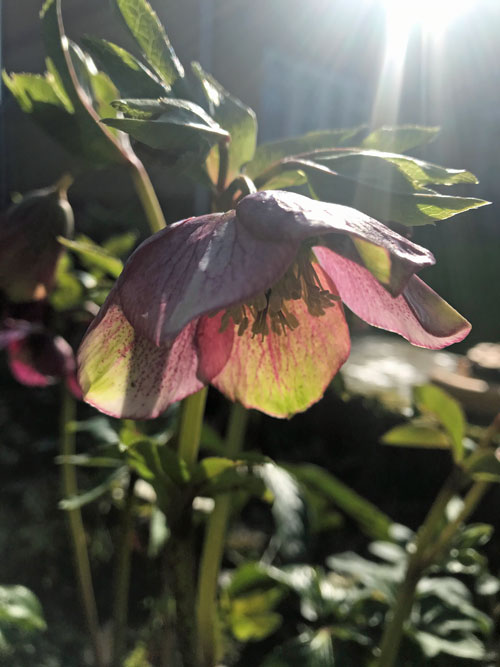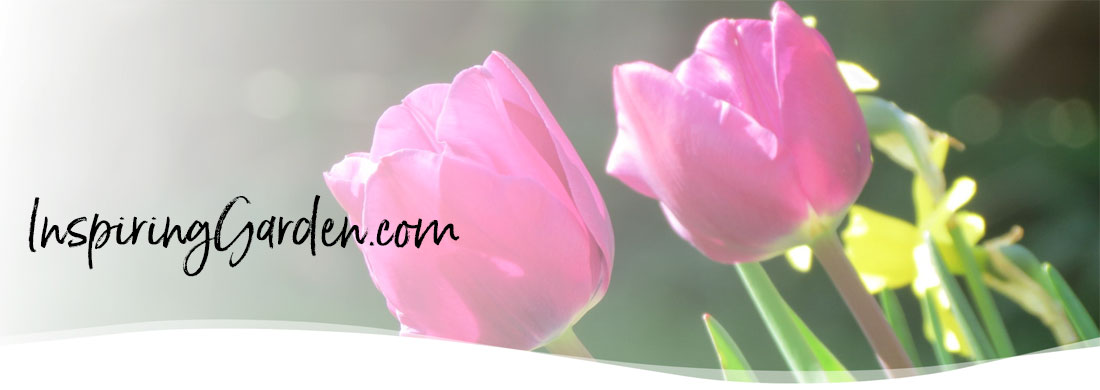Hellebores – Providing Early Spring Colour
Hellebores are flowers that really brighten up your garden in those very early months in the year when there is not a lot going on and little colour to smile about.

I randomly bought a couple of plants a few years back as a front filler for a raised bed which turned out to be an inspirational choice. Here are the main benefits of hellebores and other facts:
- Provides colour and interest during winter and into early spring.
- Provide pollinating insects a source of food in those wintery months
- Most Hellebores are hardy
- Hellebores can thrive in shaded parts of the garden
- Many varieties are evergreen providing colour all year long
- Can be divided (in early autumn) and replanted
- Tend to spread
- They can be propagated by seed saving money.
- Hellebores require very little maintenance
- Damaged and diseased leaves should be removed in autumn/winter
- Hellebores require moist and free drawing soil.
- Adding mulch in the spring will help to stop the soil from drying out
 Choosing your hellebores
Choosing your hellebores
There are many different colours available which makes this an even more desirable plant for spring blooms. The spectrum ranges from whites through to deep purples plus pinks and yellow varieties. For most varieties of hellebores there is also decorative spotting within the flower heads which adds more interest.
The easiest hellebores to grow are helleborus hybridus, which are generally known as Oriental hybrids which are not only hardy but also have longevity. With dark green leaves and a reasonable variety of different colours these are ideal for your average gardner.
 For more upmarket hellebores with striking foliage and attractive flowers Helleborus argutifolius, Helleborus ericsmithii, Helleborus foetidus, Helleborus nigercors, and Helleborus sternii are varieties that hit the spot. On the downside the flowers are generally not in bloom for as long as the helleborus hybridus and will thrive best in a position with some sunshine for at least part of the day. For shaded areas Helleborus foetidus is best.
For more upmarket hellebores with striking foliage and attractive flowers Helleborus argutifolius, Helleborus ericsmithii, Helleborus foetidus, Helleborus nigercors, and Helleborus sternii are varieties that hit the spot. On the downside the flowers are generally not in bloom for as long as the helleborus hybridus and will thrive best in a position with some sunshine for at least part of the day. For shaded areas Helleborus foetidus is best.
There are other varieties which are more difficult to grow such as elleborus niger (the Christmas Rose) which requires very good drainage during winter. The more challenging varieties such as Hellebores livid that do not fare well in wet winter soil, are better grown in containers with the optimum soil conditions and kept in the greenhouse during the worst weather conditions.
